|
|
|
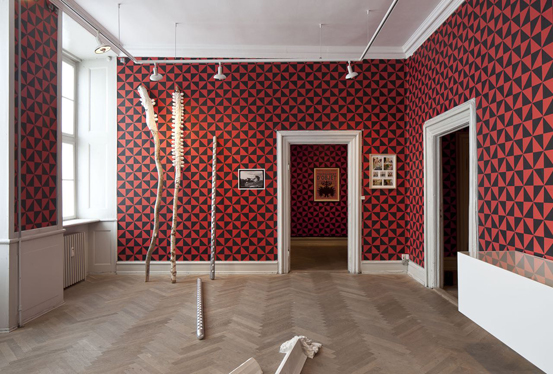 |
Kapital, installation view
Museet for Samtidskunst, Roskilde, 2013
Photo: Frida Gregersen
Kapital contained works from my artistic oeuvre from 1991 through 2013. It was a quasi-retrospective exhibition focusing on works rooted in action and happenings, along-side works in the genre of public art.
Recently, I made a remark to a close friend of mine about her place of employment, a large public media company. She replied: “Henrik, you’re obsessed with institutions.” I have to agree with her about that. In many ways my own life has unfolded as one long Sisyphean struggle trying to wrestle my way out of an institutional embrace that I am unable to escape. This is why I refused to go to kindergarten or high school and this is why the public works are placed next to the courthouse, the church, the museum, the bank, and, indeed, the high school in this typical Northern European town, a kind of model city, with its nearly impeccable infrastructure. This placement of works underlined the condition that I call the administered world.
The exhibition inside the museum was different. Most of the works have taken part in one way or another in performances or in public actions – modes of expression
that I frankly do not enjoy, primarily because it is incredibly embarrassing to enact this “puppet theater” with objects. That said, there really was no way around
it. I consider the exhibited works to be the results of these actions, containing and embodying a memory of something that once took place and that is now only partly visible, as time or action capsules for more or less obscure relations and interactions with objects.
When I made the decision to become an artist as a 16-year-old, it was because I was interested in how a thought or a text could become an aesthetic manifestation in space, time and life. For many years, the concept of social plastic was of great interest to me, the idea that art could work as an enzyme able to initiate social relations, critique and utopia. I organized seminars and produced works inspired by ideas of an art with a radically different appearance. Today I believe the answer lies somewhere else. The open-ended, social artwork easily slides along with and becomes an instrument of the rest of societal agenda, leading us unwittingly into the arms of the administered world.
If art is to have the nature and effects of a mental drug, which it basically is, it thrives better in a more somber and fictitious place in which material, thought and aesthetics are in a negative dialectical proportion to the world from which we cannot escape.
PDF catalogue from the exhibition
|
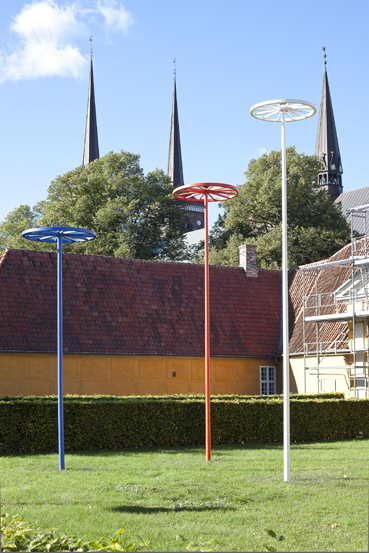 |
Catherine Wheels (LIBERTÉ EGALITÉ FRATERNITÉ) ,2011/ 2013
Wood, steel
750 / 550/ 450 cm x 120 x120 cm
Photo: Frida Gregersen
The Catherine Wheel was a blasphemous act in which body parts were displayed after capital punishment as a warning to the populace. The construction, also used as a torture device, was popular mainly in Northern Europe and in the British Isles from the Middle Ages up until the elimination of death penalty following the Enlightenment. Initially shown under the title Catherine Wheel at the Rotterdam Centraal railway station in 2011, it may be seen as a tribute to Pieter Bruegel and as a monument to free thought and the triumph of death.
|
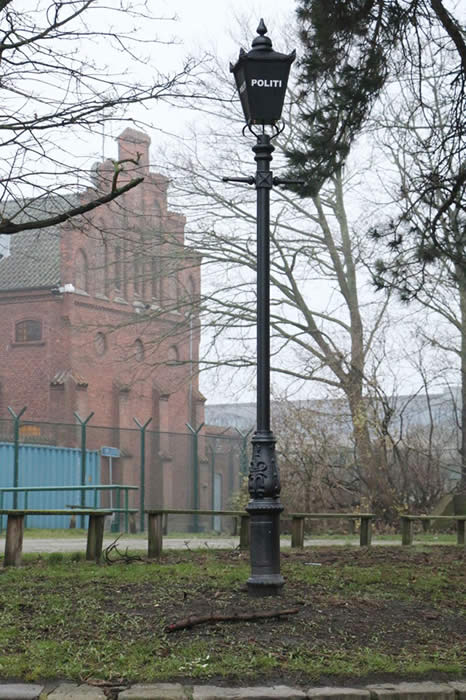
Victorian Control 2013
Lamp post, vinyl letters
370 x 20 x 20 cm
Photo: Henrik Plenge Jakobsen
I often wonder about those authorities of control that seek to maintain order and the legislation that we, as individuals and as a collective, have agreed upon, or which others have agreed upon on our behalf, with or without our consent.
|
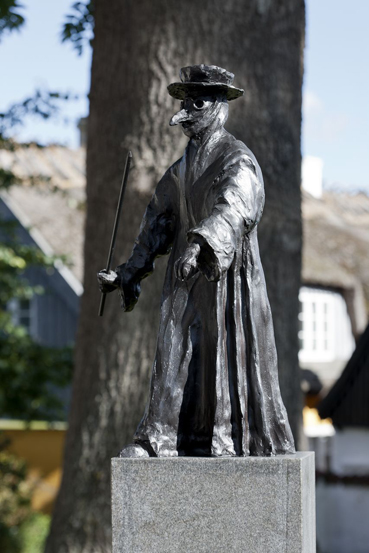
Doktor Schnabel, 2013
Bronze , 58 x 25 x 23 cm, granite plinth 180 x 26 x 26 cm
Photo: Frida Gregersen
The plague doctor is bad news. Doctor Schnabel, a name by which he was also known, was often a secondrate doctor who claimed to cure the sick with a touch of his stick. In reality he was hardly capable of doing more than diagnosing those suffering from the disease. The plague doctor is placed at the cemetery where archeological excavations have uncovered skeletons from the Middle Ages with vaguely fluorescent bones, considered to stem from special bacteria related to a leprosy epidemic that once stuck Roskilde. The Black Death and the successive waves of plague were particularly hard on Roskilde and by 1354 the population was so decimated that the king forgave all those who had been sentenced to death. As we know, this was not a permanent measure. |
|
|
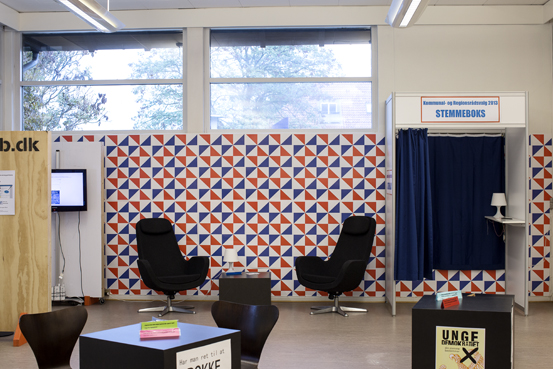 |
Liberté Egalité Fraternité, 2013
Poster 59,4 x 84,1 cm
The central library in Roskilde
Photo: Frida Gregersen
The poster design was created with freethought, the Enlightenment and the French Revolution in mind and uses a pattern originating from the feudal period. An identical pattern appears in the wallpaper Anarchist Knight.
|
 |
ANGST, 1999
Wall painting
450 x 750 cm.
Photo: Frida Gregersen
Wall painting originally carried out for the English town of Walsall, which is trying to reestablish itself after a period of industrial decline.
|
| |
| |
|
|